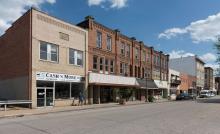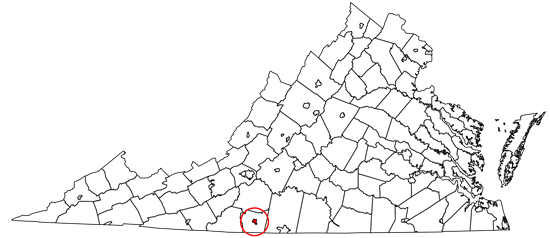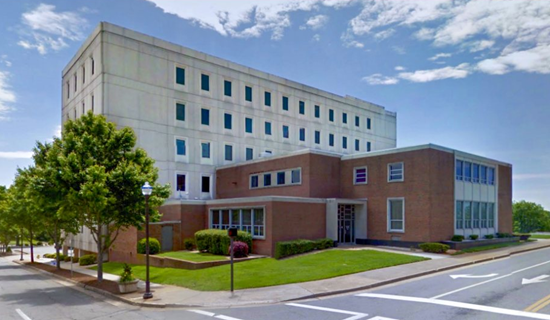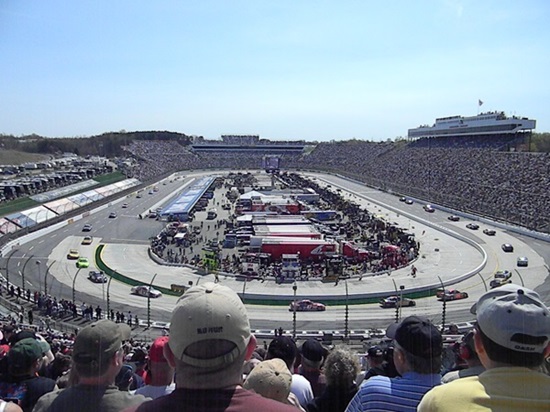
Fast, affordable Internet access for all.

Martinsville, Virginia has technically owned a municipal fiber network for the better part of a generation. But the city never had the time, resources, or interest in maximizing the Municipal Internet Network’s (MINet) full potential until COVID demonstrated the importance of affordable access and federal broadband grants made expansion a viable reality.
At a Martinsville city council meeting on February 13, the council offered unanimous support for a phased expansion of the city’s fiber network.
What exactly the expansion will look like, and how it will be funded, very much remain a work in progress.
The core MINet fiber network originally consisted of 48 strands and 20 miles of fiber connecting city schools, municipal buildings, local businesses, and key anchor institutions. A 2009 estimate indicates the network has saved the city between $100,000 and $150,000 annually on telecom lease agreements every year since its inception.

Despite having been first constructed in the 1990s, Martinsville’s MINet only has about 376 customers (98 of them being residential) in a city of nearly 14,000 residents. There’s roughly 20 users currently on a multi-month waiting list, eager to get access to affordable fiber at speeds up to a gigabit per second (Gbps).
Mike Scaffidi has been the MINet director for 26 years. He tells ILSR that while the city has contemplated network expansion for a long time, the city never had the staff or resources to prioritize the expansion or marketing of the city-owned fiber network.
“MINet has been in existence for several years and has been self-reliant with no funding resources except for what is made as profit after each fiscal year,” Scaffidi said. “Due to the lack of financial resources and staffing, we were limited to residual funds made each fiscal year, leading us not to advertise until the Council approved funds for a large-scale project.”
As such, Scaffidi says both expansion and network marketing were entirely word of mouth.
“We were up to 300 requests last year, but could not fulfill those requests,” Scaffidi said. “This led our current leadership team to decide on whether to expand and begin marketing the system or let our residents know there was no intent on performing a wide-scale broadband plan. That is–connecting residents as best we can with the limited budget at hand.”
Home Grown Transformative Change Is Coming
Like many municipalities, the COVID home education and telecommuting boom helped highlight the U.S. telecom market’s failure to deliver affordable and evenly deployed next-generation connectivity. A recent ILSR report found that the pandemic helped drive the creation of 47 new municipal broadband networks just since 2021.
“This council sees an ocean of opportunity for this community and we’re focused on bringing those opportunities to life,” Martinsville Vice Mayor Aaron Rawls recently told the Martinsville Bulletin. “Localities like Martinsville are across the country and they are building broadband infrastructures just like MiNet and we’re not going to act like we are incapable of doing it too.”

Now that the city council has supported expansion, requests for proposals (RFPs) are being submitted to solicit contractors to build out the network. Scaffidi says deployment will be segmented into seven city regions, each of which includes around 1,200 serviceable locations, taking around four months to complete–budget permitting.
“Our largest requests come from the Forest Park area and will begin construction, upon the Council’s approval and funding to complete that area,” he said.
“If requests for services match or exceed expectations, we will address other sections at a pace that we believe we can ensure a valuable investment return. Depending on the above progress, this could be an aggressive expansion of several or all remaining sections.”
The city is still exploring its financing options for the project, but Scaffidi says they’ve already begun applications for grant funding from programs like the Appalachian Regional Commission (ARC). ARC recently struck a new $7.9 million coalition partnership with Connect Humanity to help deliver affordable broadband to more than 50 communities across 12 Appalachian states.
Martinsvsille is also in the process of applying for federal grants via the Broadband Equity Access and Deployment (BEAD) program, made possible by the 2021 federal passage of the Infrastructure Investment and Jobs Act.
“Currently, we are checking some resources for matching or partial matching funds to support the project,” Scaffidi told ILSR. “ We will be having weekly meetings to determine the best route to secure the funding, but that has yet to be determined.”
A Home Grown Alternative To Muted Competition And Monopoly Power
Like so many communities, Martinsville sees muted duopoly competition between Comcast (Xfinity) and Verizon (FiOS), resulting in patchy coverage, slow speeds, high prices, and substandard customer service.
The city’s frustration about telecom market failure has been decades in the making. In 2006 the city attempted, unsuccessfully, to acquire the cable infrastructure of Adelphia Communications, after the company went bankrupt and failed to live up to its franchise obligations with the city. The effort failed after a costly legal battle, with Comcast taking ownership of the network.

Enter MINet, which offers locals several broadband options, including a 50 megabit per second (Mbps) downstream, 5 Mbps upstream tier for $50 a month; a 300 Mbps downstream, 10 Mbps upstream tier for $80 a month; a 600 Mbps downstream, 30 Mbps upstream tier for $105 a month, and a 1 Gbps down, 50 Mbps up service for $155 a month. These prices are higher (and less symmetrical) than most municipal networks where service is community-wide, thereby generating the revenues necessary to offer uniformly lower prices.
However, unlike Comcast, the city’s fiber services don’t include hidden fees, usage caps, or long-term contracts. Locals also have the option of adding Wi-Fi service for an additional $10 per month router rental charge.
“Our initial goal is to saturate 40 percent of the dwellings with over time saturating close to 70 percent of the Internet market,” Scaffidi told ILSR. “We understand that many customers are under a current contract, and many will wait to see how well our product stacks up against the current market.”
Martinsville not only hopes the market will drive affordable, cutting edge fiber service to long-neglected locals, but can ultimately be a revenue generator for a landlocked municipality whose slow growth recently had it considering reverting to a town within Henry County.
“MiNet can not only be an economic benefit to the city, but it’s an excellent fundamental service for our citizens,” Rawls said. “I’ve had it for the last seven years, and there is no deal that would make me switch. It’s reliable, fast, and a tier above what I’ve had in bigger cities like Phoenix, Arizona and Denver, Colorado.”
Header image of downtown Martinsville courtesy of Library of Congress, Public Domain Mark 1.0 Universal
Inline image of abandoned home in Martinsville courtesy of Kipp Teague, Attribution-NonCommercial-NoDerivs 2.0 Generic
Inline image of Martinsville Speedway courtesy of Wikimedia Commons, Attribution-ShareAlike 3.0 Unported
